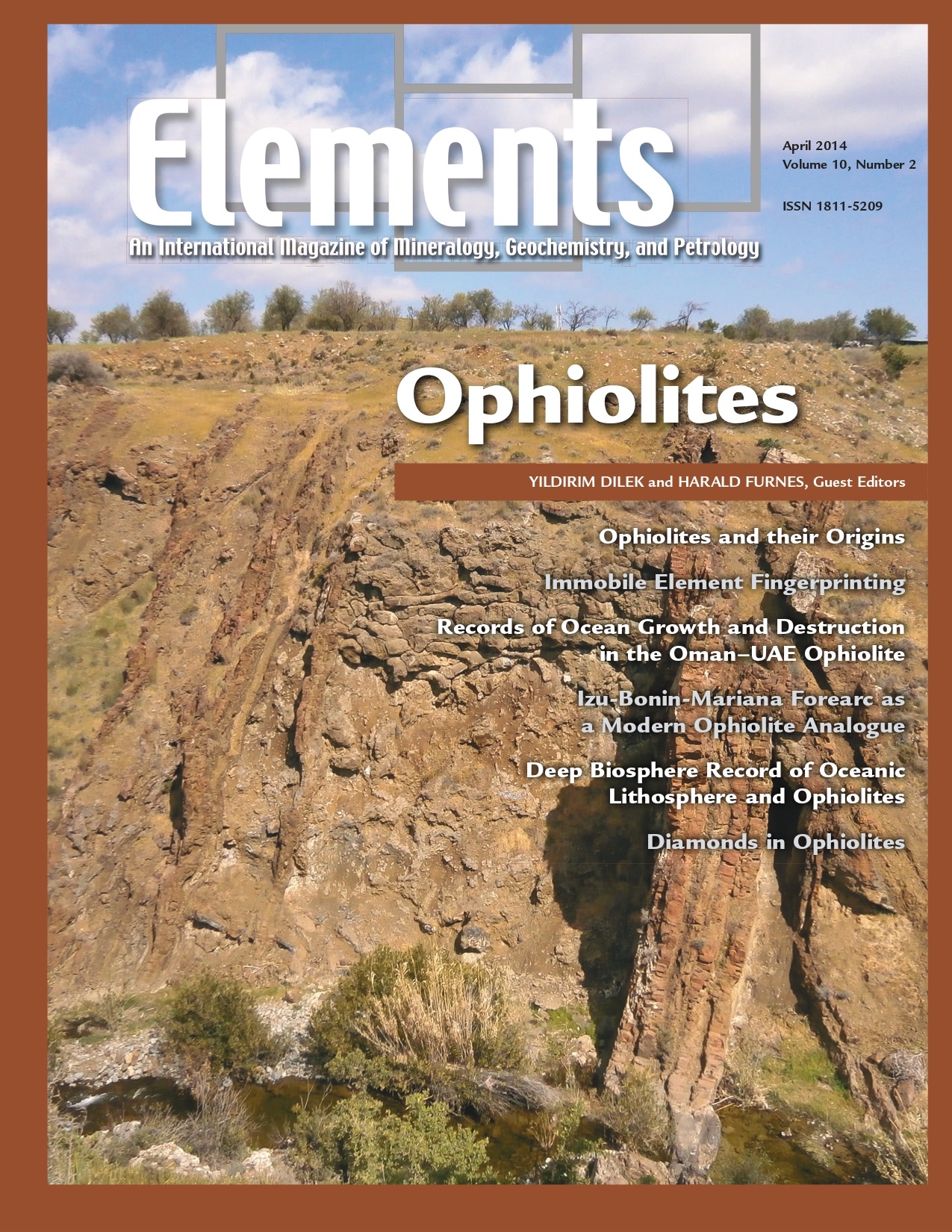
Granitic Pegmatites, August 2012, Vol. 8, No. 4
June 28, 2024
Kaolin, June 2014, Vol. 10, No. 3
June 28, 2024Ophiolites, April 2014, Vol. 10, No. 2
$20.00
This thematic issue covers some of the most exciting advances in ophiolite science. Focus is directed toward ophiolite classification during the formation and destruction of ocean basins; the mineralogy, petrology, and isotope geochemistry of ophiolites; and the trace element behavior of crustal and upper-mantle units in ophiolites.
Ophiolites
April 2014, Vol. 10, No. 2
This thematic issue covers some of the most exciting advances in ophiolite science. Focus is directed toward ophiolite classification during the formation and destruction of ocean basins; the mineralogy, petrology, and isotope geochemistry of ophiolites; and the trace element behavior of crustal and upper-mantle units in ophiolites. The issue covers the history of origin, the geochemical and petrological development, and the final emplacement of one of the largest and most studied ophiolites, the classical Semail ophiolite in Oman. Further, for a better understanding of ophiolites in relation to subduction processes, one of the papers deals with the lithological and geochemical development of the Izu-Bonin-Mariana forearc crust as a modern analogue. Finally, the issue presents some of the new and exciting aspects of microbial interaction with the volcanic component of oceanic crust, as observed in ophiolites as old as the young Earth.
Why You’ll Love Elements Magazine:
- Expert Contributors: Articles written by renowned researchers in the field of geoscience.
- Engaging Content: Join a community of readers who are passionate about Elements.
- Exceptional Quality: Each issue is printed on high-quality paper with stunning visuals and detailed illustrations that bring complex scientific concepts to life.
Order your copy of the April 2014 issue of Elements magazine today and discover the science of ophiolites.
Related products
-
Carbon Dioxide Sequestration, October 2008, Vol. 4, No. 5
$20.00Storage of carbon in the subsurface involves introduction of supercritical CO2 into rock formations beneath the surface of the Earth, typically at depths of 1000 to 4000 meters. Although CO2 is a relatively benign substance, the volume being considered is large.
-
Toxic Metals In The Environment: The Role Of Surfaces, September 2005, Vol. 1, No. 4
$20.00Metals are prevalent in the environment. They are derived from both natural and anthropogenic sources.
-
Energy: A Geoscience Perspective, June 2007, Vol. 3, No. 3
$20.00The issue of energy resources in the future may be one of the most important in the 21st century. Future climate change and the ways to abate it while still supplying needed energy will impact future political relations, world economics, human health, and the environment.




